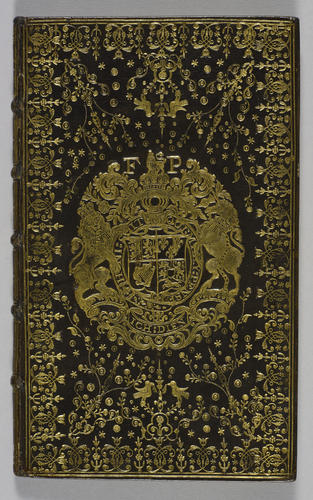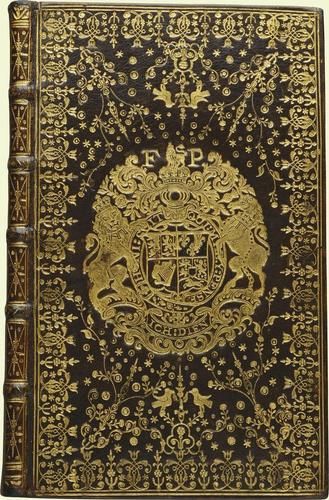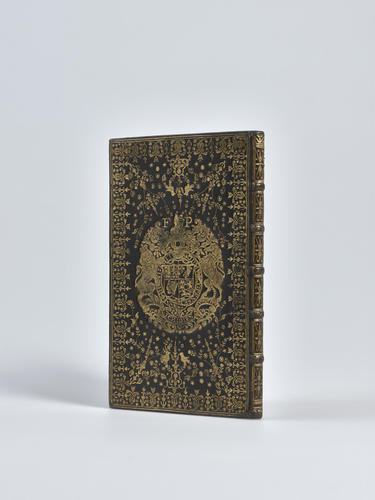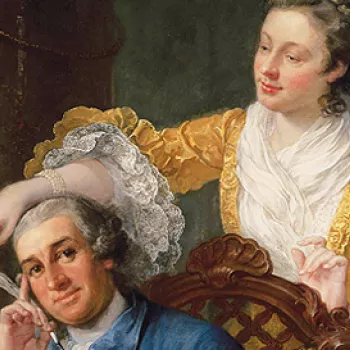True and correct tables of time ... / by R.T. [ie. Robert Tailfer] 1736
21.3 x 13.4 x 1.1 cm (book measurement (conservation)) | RCIN 1082352
![True and correct tables of time . . . / by R. T. [ie. Robert Tailfer] True and correct tables of time . . . / by R. T. [ie. Robert Tailfer]](https://col.rct.uk/sites/default/files/styles/rctr-scale-1300-500/public/collection-online/6/7/401079-1372867550.jpg?itok=KguwWer4)
Robert Tailfer (active 1736)
True and correct tables of time . . . / by R. T. [ie. Robert Tailfer] 1736
![True and correct tables of time . . . / by R. T. [ie. Robert Tailfer] True and correct tables of time . . . / by R. T. [ie. Robert Tailfer]](https://col.rct.uk/sites/default/files/styles/rctr-scale-1300-500/public/collection-online/5/2/401078-1372867542.jpg?itok=keILHA6Q)
Robert Tailfer (active 1736)
True and correct tables of time . . . / by R. T. [ie. Robert Tailfer] 1736
![True and correct tables of time . . . / by R. T. [ie. Robert Tailfer] True and correct tables of time . . . / by R. T. [ie. Robert Tailfer]](https://col.rct.uk/sites/default/files/styles/rctr-scale-1300-500/public/collection-online/6/b/137545-1292747340.jpg?itok=7xfB5_as)
Robert Tailfer (active 1736)
True and correct tables of time . . . / by R. T. [ie. Robert Tailfer] 1736
![True and correct tables of time . . . / by R. T. [ie. Robert Tailfer] True and correct tables of time . . . / by R. T. [ie. Robert Tailfer]](https://col.rct.uk/sites/default/files/styles/rctr-scale-1300-500/public/collection-online/8/5/909747-1565094471.jpg?itok=3W_9zpd_)
Robert Tailfer (active 1736)
True and correct tables of time . . . / by R. T. [ie. Robert Tailfer] 1736
![True and correct tables of time . . . / by R. T. [ie. Robert Tailfer] True and correct tables of time . . . / by R. T. [ie. Robert Tailfer]](https://col.rct.uk/sites/default/files/styles/rctr-scale-1300-500/public/collection-online/d/8/909748-1565094539.jpg?itok=puCu0uiA)
Robert Tailfer (active 1736)
True and correct tables of time . . . / by R. T. [ie. Robert Tailfer] 1736
![True and correct tables of time . . . / by R. T. [ie. Robert Tailfer] True and correct tables of time . . . / by R. T. [ie. Robert Tailfer]](https://col.rct.uk/sites/default/files/styles/rctr-scale-1300-500/public/collection-online/0/5/909749-1565094612.jpg?itok=T-_p7TpW)
Robert Tailfer (active 1736)
True and correct tables of time . . . / by R. T. [ie. Robert Tailfer] 1736






-
The True and Correct Tables of Time was written to ease translation between the old-style Julian calendar and the more accurate Gregorian calendar. The adjustment in 1752 caused two short years – 1751 lasted only from 25 March to 31 December, in order for 1752 to start on 1 January, and eleven days, 3–13 September 1752, were sacrificed to bring the British calendar in line with the rest of Gregorian Europe. This reputedly caused great consternation, as the public cried ‘Give us our eleven days!’ Robert Tailfer, being a naval officer, would have been more conversant than most with the confusions arising from two different dating systems. His work enabled the reader to find out the Julian date for any day between 1300 and 2083 and the Gregorian date for any day between 1582 and 2083. The whole book was engraved by George Bickham the Elder. Tailfer’s impulse was not an isolated one. The 1730s saw several attempts to encourage calendar reform, notably in the Gentleman’s Magazine, where its editor Sylvanus Urban fulminated upon the discrepancies between the various start dates for the New Year: ‘I find myself often perplexed with the notorious Disagreement in Dates from Christmas to Lady-Day by almost every English Historian; and should therefore rejoice to see this uncertain Epocha … reduced to a regular and certain Standard’.
Text adapted from The First Georgians; Art and Monarchy 1714 - 1760, London, 2014.
Binding information
Contemporary black goatskin binding, with elaborate gold-tooling on both sides and spine.
On both sides, an outer double fillet border, followed by an inner border of addorsed ‘C’-shaped vine tools surmounted by a flower head, interspersed with smaller sprouting-flower tools; in the centre the arms of Frederick, Prince of Wales, surrounded by the garter, surmounted by an imperial crown and lion, itself surrounded by curling vines and a thistle and Tudor rose and the initials ‘F’ ‘P’, flanked by a crowned lion and unicorn supporters, all above an unfurling ribbon with the motto: ‘ICH DIEN’; the rest of the space filled with a profusion of tools, including stars, flower-heads, leaves and swirling vines, with two birds perched on rose plants either side of a thistle on the upper and lower sections.
Sides and insides of both boards tooled with flower roll.
Spine divided into six compartments by raised bands, tooled with a roll (now very faded). Each compartment tooled with double fillet border, divided into four by a dotted gouge and filled with flower-heads and fleurons.
Contemporary marble endpapers, gilt and painted in light pink with a pattern of vines, flowers and bunches of grapes. All edges gilt.
Provenance
Possibly belonged to Frederick, Prince of Wales; acquired by Queen Elizabeth II, 14 October 1953 (G. Michelmore, lot 101, £200).
-
Creator(s)
(publisher)Acquirer(s)
-
Measurements
21.3 x 13.4 x 1.1 cm (book measurement (conservation))
22.0 x 1.0 cm (book measurement (inventory))
25.0 x 2.0 cm (book in box)
Other number(s)
RL acq. 1920-77: Books added to Royal Library, Windsor Castle 1 January 1920 to February 1977 – RL acq. 1920-77 14 Oct. 1953








